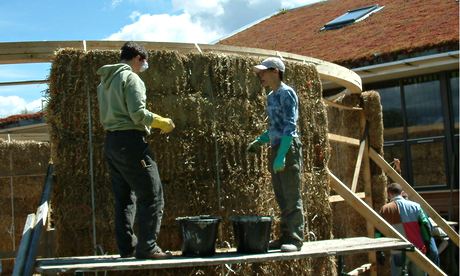
Unsure what to do with that tatty old pair of curtains? How about stuffing it into the walls?
Perhaps that's not as mad as it sounds: waste textiles – old clothes, curtains, carpets – are the latest materials to be developed into insulation to help save energy and lower utility bills.
"We're currently developing products made from post-consumer and post-industrial textile waste," says James Taylor, managing director of James Robinson Fibres Ltd.
"The textile industry has a massive landfill problem but what we want to do is not only stop this waste but turn these materials into insulation that can actually save energy," he says.
The product is still at the early development age but insulating your home – whether with old carpets or the thick foam panels sold at DIY stores – is a proven way to whack down your utility bills.
A recent in-depth study by Salford University, Leeds Metropolitan University and construction product manufacturer Saint-Gobain Recherché, involved a typical 1919 terrace house being retrofitted with insulation.
"The study found that properly insulating a home on a retrofit reduced the property's heating demand by nearly two-thirds," says Richard Fitton, a research fellow at Salford University. "This would reduce the annual heating cost for a property of that type from £554 a year to £206."
But you can't just shove any old materials into your walls, floors and loft – even "natural" products need to be treated (you don't want your lovely sheep's wool insulation to be crawling with maggots) and insulation needs to be fire-proof.
However, that doesn't mean the only option is to head to the DIY store for the standard-issue thick foam boards.
Products with wool and recycled fibresstraw bales, waste paper are alternatives, as is cladding the exterior of properties.
"Our members also experiment with hemp and lime," says Allan Shepherd of the Centre for Alternative Technology, in Machynlleth, Wales.
The centre runs courses in straw bale building, eco-refurbishment and cladding. "And you can use cork to help insulate a flat roof, for example," he adds.
One example of natural insulation is Kim Sui's home in Moray, Scotland. Sui, a development manager at a social enterprise, insulated her floors with sheep's wool and her walls with straw bales.
Sui says: "The wool was treated with a minimum of chemicals and the straw bales were compressed. The materials are natural and safe and durable: they won't need to be replaced and my bills are now a quarter of what they were before."
Keith Jackson is another example. Since super-insulating and cladding his home, in Nottinghamshire his bills have dropped by two-thirds.
"It's like wrapping your home with a tea cosy," says Jackson, who retrofitted his bungalow in a fibre board cladding.
He skimmed the lower part of the house with a natural lime plaster and there's a timber frame on the upper part, painted with rye and linseed. "It looks Scandinavian," says Jackson.
Jackson has insulated it with a product made from recycled newspapers and phone directories, fitted double glazing and made the house as air-tight as possible.
"Insulation is the key to saving energy," says Jackson: "But if you're a practical person, you don't need an architect or designer to tell you what needs doing. You can do a lot of it yourself."
Insulation dos and don'ts:
1) You can't just pack any old junk into a wall or roof space. Materials have to be fire proof, for a start and while some jobs are easy enough (draught proofing the windows, say) others are for the skilled.
2) Don't attempt to fill cavity walls yourself: you will need to find a registered installer, says the Energy Saving Trust. A professional can do the job in around two hours for an average house. See the EST website for a list of recommended insulation installers or call 0300 123 1234.
3) Do find a professional registered with a trade association, says consumer group Which? such as: the National Insulation Association (Nia), the Cavity Insulation Guarantee Agency (Ciga) or the British Board of Agrément (BBA).
4) Do make sure the installation is guaranteed for 25 years by Ciga.
5) Do make sure that any solid wall insulation complies with the current Building Regulations.
6) Don't try and insulate your own loft if access if difficult, get a professional to do the job.
7) Do your research and find out about the products before you buy. For example, there's a guide by consumer group Which? about the types of loft insulation on offer.
8) Do check whether you're eligible for free insulation or a grant or loan to help pay for it by looking here.
9) The Ecology Building Society has lots of information on how its borrowers and members have eco-insulated their homes.
10) Aside from alternative forms of insulation, getting a green deal assessment and then getting a green deal installer to fit insulation is also worth considering. If they install insulation under the green deal, it is also possible to claim cashback – £150 for a loft, £250 for a cavity walls, and up to £4,000 for solid walls.
This article was amended on Friday 25 April to include the green deal option above.
Interested in finding out more about how you can live better? Take a look at this month's Live Better Challenge here.
The Live Better Challenge is funded by Unilever; its focus is sustainable living. All content is editorially independent except for pieces labelled advertisement feature. Find out more here.

